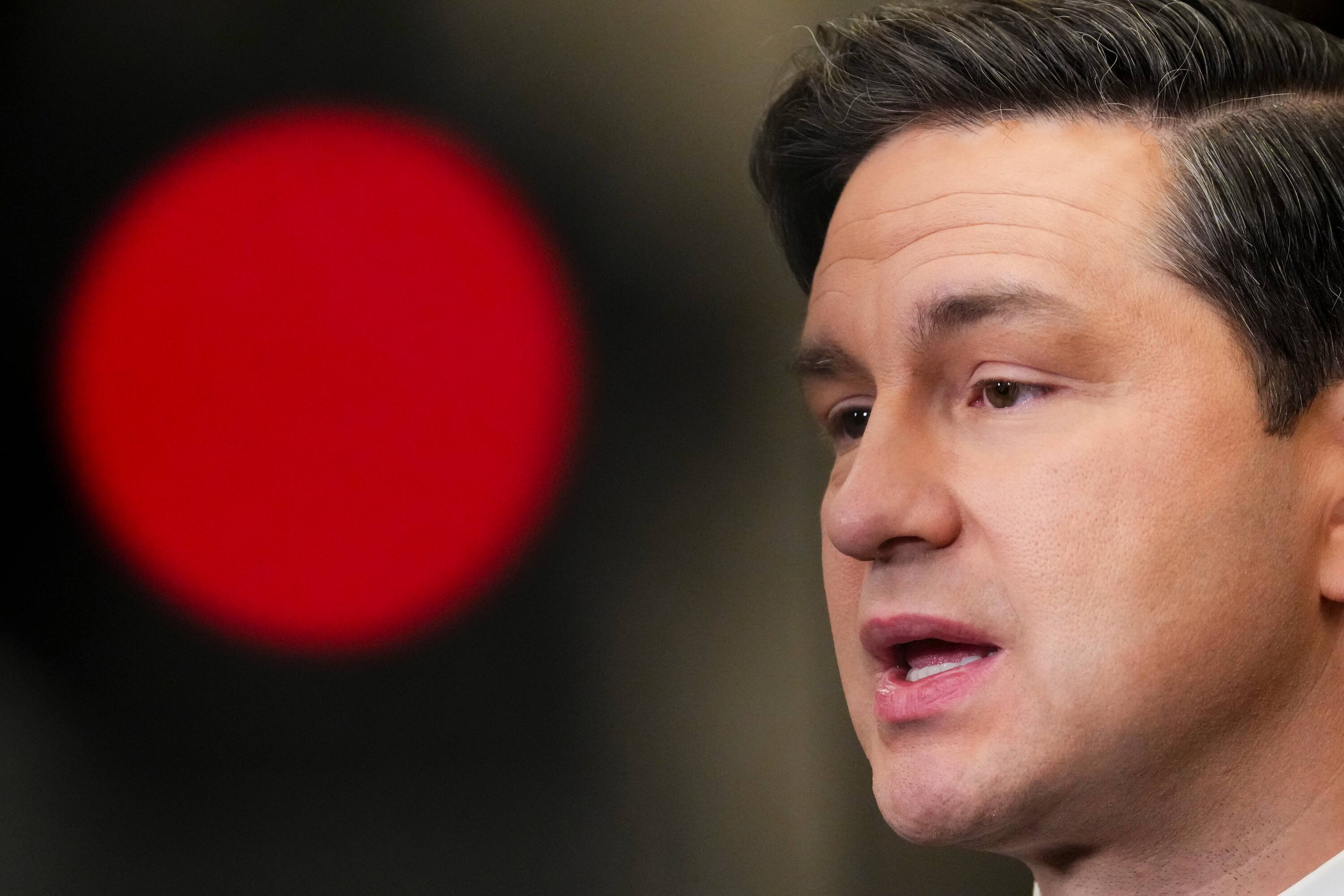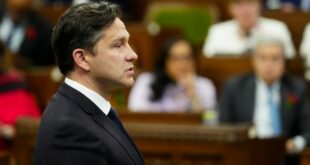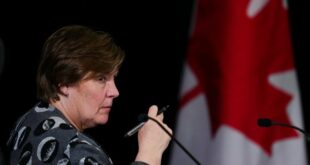It’s a safe bet the campaign will be dominated by emissions reduction talk. Why wait until then?
Pressed by reporters on Monday to explain what a Conservative government would do to reduce Canada’s greenhouse gas emissions and combat climate change, Pierre Poilievre again demurred.
“Our election platform will deal with all these issues,” he said.
Thing is, Poilievre already seems rather eager for an election. The Conservative leader asked the prime minister to deem Monday’s vote on a Conservative motion to be a matter of confidence. And he is now declaring that the next election will be a “carbon tax election.”
Actually, we’ve already had a few of those. In fact, every federal campaign since 2008 has featured carbon-pricing proposals from multiple parties — including the Conservative Party in both 2008 and 2021. In the last two elections, the party that won the most seats — the Liberals — was the one that actually had implemented a national carbon tax.
That the Liberal government’s carbon tax — and the latest outbreak of consternation over that policy — will feature in the next election, whenever it happens, is a safe prediction. But it would be more accurate to say the next election will be a climate change election.
Every election is a climate change election now, whether campaigning politicians want to acknowledge it or not.
But there’s also no reason (beyond partisan political considerations) for waiting to have a real debate on Canada’s response to climate change until the writs are dropped.
The environment commissioner’s latest report on the Liberal government’s climate agenda, released Tuesday, is a decent starting point for that debate. Indeed, the mere existence of the commissioner’s review is due to the reporting mechanisms built into the Net-Zero Emissions Accountability Act passed in 2021 — government legislation the Conservatives voted against.
In noting that the government is not on track to achieve the promised 40 per cent reduction in greenhouse gas emissions below 2005 levels by 2030, the commissioner was merely repeating what the government itself acknowledged last December. But the larger story behind that simple fact is where the climate policy debate gets much more interesting.
By the government’s reckoning, Canada should be able to achieve a 34 per cent reduction in emissions by 2030. That would be no small thing. In fact, it would be enough to meet Canada’s original 2030 target, first set by Stephen Harper’s Conservative government in 2015.
But the Liberal government decided to adopt a more ambitious target two years ago. It’s that target Prime Minister Justin Trudeau and his ministers are now chasing.
The long and short of Canada’s emissions challenge
It’s still possible to see significant progress. A government projection prepared in 2016, less than a year after the Trudeau government came to office, estimated that without additional policies, Canada’s emissions in 2030 would total 815 megatonnes — equivalent to a nine-per cent increase above 2005 levels. The government’s latest projection is that emissions could be as low as 491 Mt in 2030.
When a long-time environmentalist — Catherine Abreu, who is also a member of the government’s net-zero advisory body — remarked at a conference in Ottawa this week that climate policy in Canada has gone through a “revolution” in the last seven years, she had solid grounds for saying so.
But the precise measure of that revolution, and Canada’s chances of getting to within sight of that 2030 target, now depend a lot on the actual implementation of policies that have so far only been promised or proposed.
Projections by the independent Climate Institute bear this out. If only those policies that have been fully implemented are considered, the Institute finds that Canada is on track to miss its 2030 target by 137 Mt. When all of the Liberal government’s policy commitments are added to the model, the gap is reduced to just 15 Mt.
According to the environment commissioner, the federal government is internally tracking progress on as many as 115 climate-related policies. But “delays” in implementing some of the most significant policies are endangering Canada’s chances of meeting that 2030 target.

The government is hoping to publish final regulations for mandated zero-emission vehicle sales targets and draft regulations for methane emissions from the oil and gas industry in the coming months. A “framework” for a cap on oil and gas emissions is expected before the end of the year. A final version of clean electricity regulations could come next year. (All these policies were first floated in 2021.)
The government also still needs to finalize tax credits for investment in clean technology, electricity, hydrogen and carbon capture. Those incentives were first announced in the spring budget and consultations on their final design were launched in June. But even Natural Resources Minister Jonathan Wilkinson seems impatient to get them up and running.
“They were intended to be a competitive response to the Inflation Reduction Act in the United States. Those tax credits in the United States have existed, and are available now, for over a year,” Wilkinson told the Climate Institute’s annual conference this week. “We need to get that finished so that companies can actually make investment decisions.”
How will Conservatives’ climate math add up?
The wheels of public policy often turn slowly (at least outside of a pandemic). But if the Liberals want to accomplish anything in the months remaining before the next election, they might not have anything left on the to-do list more important, practically and politically, than this collection of policies.
Each new policy implemented also presents another choice for Poilievre, who presumably will have to decide how much of the Liberal climate agenda he can afford to oppose. He already opposes both the consumer carbon tax and the clean fuel regulations. He was non-committal when asked this week whether he would leave the industrial carbon price alone.

Will Pierre Poilievre commit to achieving the Paris Agreement?
Conservative Leader Pierre Poilievre responds to reporters’ questions about his emissions targets. The 2016 Paris Agreement, which Canada signed, commits countries to working toward limiting warming to the critical threshold of 1.5 C above pre-industrial levels.
These questions aren’t just political — they’re mathematical. The federal government estimates that the carbon price will contribute to a third of Canada’s projected emissions reductions between now and 2030. The clean fuel regulations are projected to reduce emissions by 27 Mt in 2030.
So while they lambasted the government this week for not being on track to meet its emissions target, the Conservatives’ approach to date would seem to take the country even further away from that target — at least until Poilievre says what he would do to replace the climate policies he wants to repeal.
In the meantime, the Conservatives can try to compensate by continuing their attacks on the Liberal government’s credibility. And Liberals can try to bolster their own case by following through on their stated intentions.
Then, at some point, there will be another election that will once again determine the future direction of Canada’s climate policy.
ABOUT THE AUTHOR
Aaron Wherry has covered Parliament Hill since 2007 and has written for Maclean’s, the National Post and the Globe and Mail. He is the author of Promise & Peril, a book about Justin Trudeau’s years in power.
*****
Credit belongs to : www.cbc.ca
 Atin Ito First Filipino Community Newspaper in Ontario
Atin Ito First Filipino Community Newspaper in Ontario






